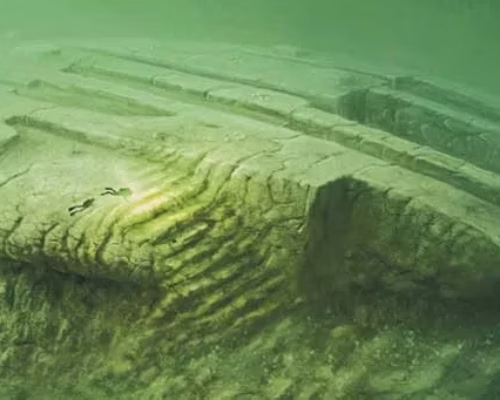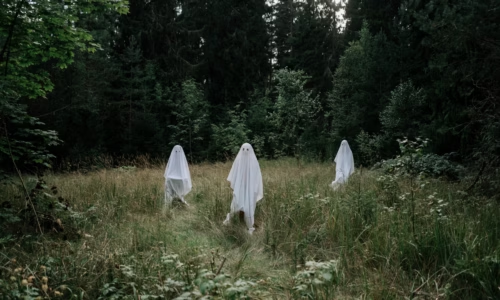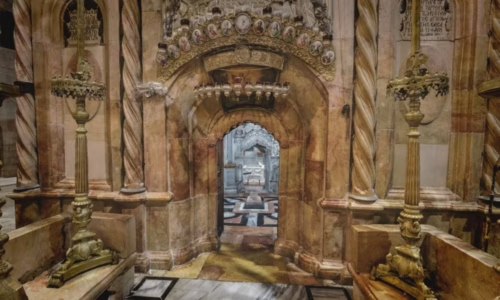Few places on Earth stir as much reverence, awe, and mystery as the Tomb of Jesus Christ, believed to be the burial site of the man billions worship as the Son of God. Hidden beneath layers of marble, history, and faith, this sacred site — located within Jerusalem’s Church of the Holy Sepulchre — has been the center of pilgrimage, controversy, and discovery for nearly two thousand years. But despite centuries of study and devotion, the tomb still guards secrets that science and theology struggle to explain.
Recent excavations, scientific analyses, and ancient records have peeled back the layers of history — but what lies beneath may challenge everything we thought we knew about the life, death, and resurrection of Christ.
A Tomb Lost and Found
The story begins in the 4th century AD when Emperor Constantine the Great converted to Christianity and sent his mother, Empress Helena, to the Holy Land to locate the sacred sites of the Christian faith. Guided by visions and local traditions, Helena discovered a tomb beneath a Roman temple dedicated to Venus. She declared it to be the actual burial site of Jesus Christ — and Constantine ordered a grand basilica, the Church of the Holy Sepulchre, to be built above it.
But over the centuries, wars, fires, and earthquakes damaged the structure, and the tomb’s original form was buried, rebuilt, and forgotten. Crusaders, Muslims, and rival Christian factions all fought for control over it, adding layers of architecture and legend. By the 19th century, few could say for sure what remained of the original tomb.
Then, in 2016, for the first time in centuries, scientists were granted permission to open the tomb and study it — and what they found shocked the world.
The 2016 Revelation: What Lies Beneath the Marble Slab
For centuries, a marble slab had covered the site where Christ’s body was said to have been laid. No one had seen beneath it since at least 1555 AD — until archaeologists and restoration experts, under the supervision of the Greek Orthodox Church, lifted the slab.
Beneath it, they found another older slab, cracked and scorched, believed to date back to the 4th century — the time of Constantine and Helena. Beneath that was the original limestone burial bed, carved directly into the rock.
When researchers examined it using ground-penetrating radar and infrared scans, they discovered something extraordinary — the bed of rock had remained undisturbed since the early Christian era. Despite centuries of invasion and reconstruction, the core of the tomb had remained untouched.
Moreover, samples of mortar taken from the original layer were radiocarbon-dated to around AD 345, precisely the time when Constantine built the first church, providing strong archaeological evidence that the site had indeed been venerated as Jesus’s tomb since ancient times.
The Miraculous Light and the Unexplained Phenomena
One of the strangest and most enduring mysteries associated with Christ’s tomb is the “Holy Fire” phenomenon. Every year, on Holy Saturday — the day before Easter — priests enter the sealed tomb with unlit candles. Moments later, a blue flame is said to miraculously appear inside the tomb, lighting the candles on its own.
The flame is then passed out to thousands of pilgrims who believe it to be divine. The event has been witnessed for centuries and recorded since the 9th century, yet no scientific explanation has ever fully accounted for it.
Scientists who have observed the event have noted unusual electrical activity and faint blue light phenomena inside the chamber before ignition, but the source of these phenomena remains unknown. Believers see it as an annual reaffirmation of Christ’s resurrection — skeptics see it as ritual and myth. Still, no one can replicate or entirely debunk it.
Burial Traditions and the Missing Body
According to the Gospels, Jesus was buried in a tomb hewn from rock, sealed with a large stone, and guarded by Roman soldiers. When his followers visited the site three days later, the stone was rolled away, and the body was gone.
For centuries, skeptics have sought to explain the Resurrection as a theft, a vision, or a symbolic event. Yet the physical evidence within the tomb raises questions. The limestone burial bench shows no signs of prolonged use, suggesting the body lay there for only a short time — consistent with the Gospel narrative.
Moreover, the tomb’s design matches that of wealthy 1st-century Jewish burials, which aligns with the account of Joseph of Arimathea, the affluent man who offered his family tomb for Jesus’s burial.
Even the Shroud of Turin, a linen cloth many believe to be Christ’s burial shroud, bears pollen traces and limestone dust consistent with materials found in the tomb’s region — further deepening the mystery.
Hidden Chambers and Lost Secrets
During modern restoration, radar scans hinted at unexplored voids and passageways beneath the tomb’s chamber — suggesting there may be more to the structure than meets the eye. Some believe these lower levels could hold early Christian relics, writings, or even older burial sites predating Jesus’s time.
Others suggest that these voids may connect to an ancient network of tunnels running beneath Jerusalem — a maze of forgotten chambers that may hold secrets of early Christianity, or perhaps the original relics once hidden by the Church to protect them from invaders.
The Vatican and local church authorities have so far declined to authorize deeper excavations, citing the site’s fragility and sacred nature — leaving those secrets literally buried in stone.
Faith Meets Science
The tomb of Christ sits at the intersection of faith and science, where archaeology and belief intertwine. Scientific tools can reveal the tomb’s age, architecture, and geology — but not the miracle it represents.
For believers, the empty tomb is the cornerstone of faith—the physical proof that death has been conquered. For scientists, it’s a window into history, revealing how early Christians commemorated their savior. For both, it remains one of the most profound and mysterious sites on Earth.
Conclusion: The Eternal Mystery of an Empty Tomb
The Secrets of Christ’s Tomb go far beyond ancient stone and relics. They echo through time — a reminder of humanity’s endless search for truth, faith, and meaning. Whether one views it as a historical site, a holy relic, or the literal resting place of the divine, the tomb continues to defy explanation and deepen the world’s fascination.
Even after two thousand years, one question remains unanswered — what truly happened in that sealed chamber on the third day?
Perhaps the greatest secret of Christ’s tomb isn’t hidden in the rock beneath Jerusalem, but in the faith it continues to inspire — proof that some mysteries are meant not to be solved, but to be believed.







